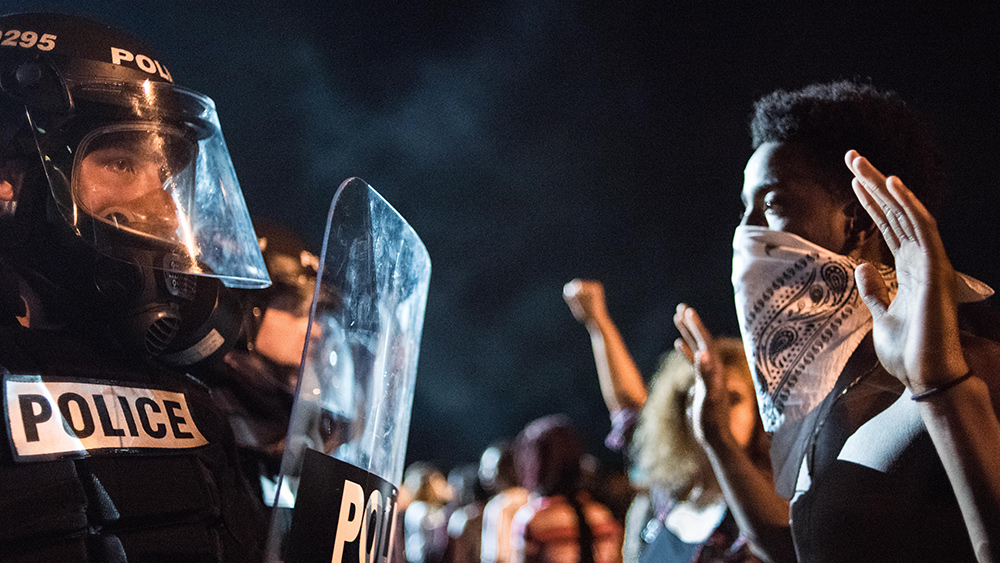
A video of the incident shows the woman – 33-year-old Lore-Elisabeth Blumenthal – throwing an unidentified flaming object into a police cruiser. She is next seen taking a burning piece of wood from the cruiser and placing it into an idle SUV which then caused the latter vehicle to catch fire. Both cars were destroyed.
According to U.S. Attorney William McSwain, while the U.S. Attorney’s Office supports the people’s freedom to assemble peaceably and to petition their government through protests, their office draws the line at violent rioting, noting in a statement that torching police vehicles has “nothing to do with peaceful protest or any legitimate message."
"Anybody who engaged in such acts can stand by to put your hands behind your back and head to federal prison. We are coming for you," McSwain warned.
Investigators followed a trail of “digital breadcrumbs”
According to court filings, investigators from the Federal Bureau of Investigation (FBI) and the Department of Justice tracked Blumenthal by matching images of her tattoo and an article of clothing that she wore during the demonstration and protest.
As detailed in the documents obtained by the Philadelphia Inquirer, FBI agents first scoured Instagram for amateur photos and footage of the May 30 riots in order to find the then-unidentified arsonist. This led them to the Etsy shop that sold the distinctive T-shirt that Blumenthal was wearing in the now-viral video.
After analyzing comments left by customers who bought the shirt, the agents zeroed in on a user who called herself “alleycatlore.” According to the FBI, this username belonged to a person who also used the username "lore-elisabeth,” on which they promptly ran an online search.
This, authorities said, caused a LinkedIn profile of a woman in Philadelphia to turn up.
After browsing the woman’s LinkedIn profile – which noted that she was employed as a massage therapist – the agents proceeded to visit her employer’s website, where they saw videos showing a woman who had the same tattoo as the arsonist. (Related: The US government thinks that fighting coronavirus requires spying on your phone’s data.)
FBI agents eventually found Blumenthal’s phone number and address in her employer’s website. According to the agents, they verified the latter after comparing it with a record of sale provided by Etsy. The record of sale listed the same address as the one the agents first found through Blumenthal’s employer.
Civil rights advocates ask: Is Big Brother watching?
As noted by the Inquirer, the meticulous investigation conducted by both the FBI and the Justice Department highlighted the extent to which the government can use and exploit information channels such as digital video footage, online transactions and social media posts to track people believed to be responsible for suspected crimes.
Civil rights advocates, however, claim that the FBI and Justice Department’s actions cast doubts and raise questions about the real scope of law enforcement surveillance on social media.
Faiza Patel, co-director of the Brennan Center for Justice's Liberty & National Security Program, noted in a statement published on tech website CNet that since social media works in tandem with other technologies, it is easy for the authorities to check on protesters and their activities.
"There's a lot of photographic evidence of protesters, which can then be run through facial recognition technology," Patel warned.
This is echoed by criminal defense attorney Paul Hetznecker, who noted that social media, despite being a valuable tool for protesters who rely on it to organize and manage protests – as well as capture moments of alleged racially motivated police brutality – has become a “fertile ground for government surveillance.”
“I think people have lost awareness of that,” said Hetznecker, who represents Blumenthal and other demonstrators.
Blumenthal could face a maximum sentence of 80 years in prison and a fine of up to USD 500,000.
Sources include:
Please contact us for more information.























